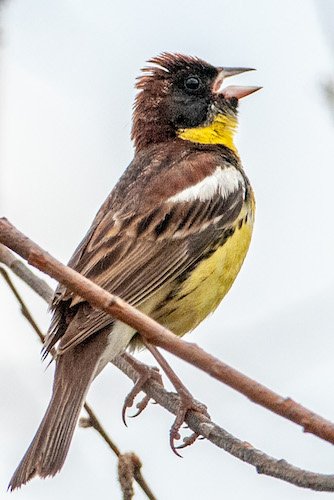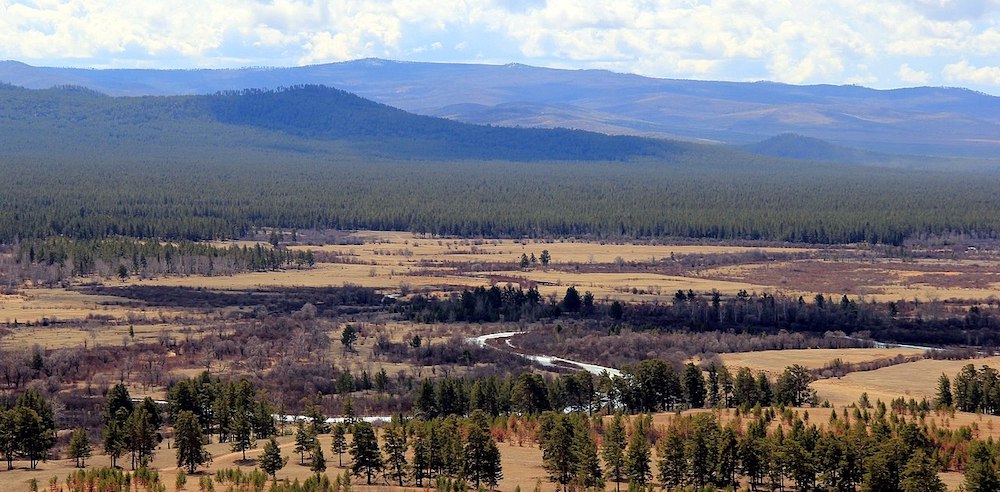Baikal

The Baikal area consists of the Republic of Buryatia and the ‘Oblast’ of Chita situated in southern Siberia, Russia. Lake Baikal (the deepest rift lake in the world), which lies on the western edge of the Republic of Buryatia, partly forms a border with Irkutsk Oblast. The major rivers of the area include Barguzin, Irkut, Kitou, Oka, Selenga, Uda, Upper Angara and Vitim rivers. Over 80% of the republic’s territory is located in the mountainous region, including the Baikal Mountains on the northern shores of Lake Baikal, the Ulan-Burgas east of the lake, and the Selenga Highlands in the south near the Mongolia–Russia border. Chita has a border with China to the east and covers over 431,500 km2 mostly steppe. Republic of Buryatia covers more than 351,000 km2.The average annual temperature is 0 °C with January averaging −17 °C and July reaching 25 °C.

Lake Baikal – ©Rost.galis, CC BY-SA 4.0 via Wikimedia Commons
The lake hosts a rich endemic fauna of invertebrates. The copepod Epischura baikalensis is endemic to Lake Baikal and the dominating zooplankton species there, making up 80 to 90% of the total biomass. It is estimated that they filter as much as a thousand cubic kilometers of water a year, or the lake’s entire volume every twenty-three years. More than 350 species and subspecies of amphipods are endemic to the lake, there are two hundred acquatric worm species, 160 of which are endemic, but fewer than 65 native fish species occur in the lake basin, although more than half of these are endemic.
Birding Baikal
There are 236 species of birds that inhabit Lake Baikal, 29 of which are waterfowl. Although named after the lake, both the Baikal Teal and Baikal Bush Warbler are widespread in eastern Asia.The most famous place in the region is, of course, Lake Baikal; the deepest freshwater lake in the world. Large expanses of open water and wonderful banks and shoreline, where rocks make way to forests, are always attractive for travellers. On the lake you can find a great diversity of waterfowl, which can be a great spectacle even for experienced birdwatchers.
This variety has a peak at the delta of big rivers, such as Selenga and Barguzin. Rocky banks are inhabited by a special group of birds including several different Swifts, Hoopoe & genuine Rock Doves. The banks are interesting too. This is a kingdom of mountain taiga forests; Cedar, spruce and pine form largely unbroken cover. There are a lot of mosses, lichens, ferns and fungi here too. The avifauna consists of typical taiga species. Here you can find different Owls, Falcons, Thrushes, Nightingales and also Booted Eagle & Daurian Jackdaw.

Uda River – ©Aniriy, CC BY-SA 4.0 via Wikimedia Commons
In the high mountain forests and on the alpine meadows it’s possible to see Redstarts & Accentors. In the south of the region there is a steppe zone. Large feather-grass and bush grasslands are the commonest flora here. These exceptional habitats consist of steppe lakes which are the breeding sites & migration stops of great number of waterfowl and other birds including such rare ones as Swan Goose, Relict Gull and White-naped Crane.
-
Baikalo-Lensky Reserve
WebpageSatellite ViewThis site includes part of Lake Baikal shoreline, mountain landscapes and the Lena River source. Different natural conditions define the great number of birds. More than 230 species of birds have been recorded in the reserve territory, including 146 breeding ones. On the Baikal-lake common species are White-winged Scoter, Shoveler, Gadwall, Falcated Duck and Ruddy Shelduck. In the different kinds of waterside habitats breed waders, such as Common Sandpiper, Wood Sandpiper, Pin-tailed Snipe & Common Snipe. The forests are full of owls, for example, Long-eared Owl, Marsh Owl & Tengmalm’s Owl. On the rocky banks you can find Rock Dove, three Swift species: Siberian, Black & Needle-tailed; and Hoopoe. Areas of scrub are bird rich with species such as Yellow-breasted Bunting and Chestnut Bunting. Lower mountain slopes hold a great number of Thrushes, Pallas’s Grasshopper Warbler, Siberian Ruby-throat, Siberian Blue Robin & Daurian Jackdaw. The avifauna of the high mountains is more special: it is the only place to find Red-bellied Redstart, Polar Bunting, Water Pipit & Brown Accentor. Such interesting birds as Isabelline Wheatear, Pied Wheatear, Rock Thrush and Meadow Bunting live on the steppe areas on the lake banks. -
Selenga River Delta
InformationSatellite ViewThis site is a great place for both breeding and migration concentrations of waterfowl. About 300 species of birds have been recorded in this territory. Great foraging conditions, and safe cover are created by a lot of shallow water, former river-beds and streams. You can easily find here such interesting breeding birds as White-tailed Eagle, Red-breasted Snipe, Caspian Tern, Bittern, Whooper Swan and Black Mallard. But the most interesting time here is spring and autumn. At migration birds are concentrated in great numbers. The most common of them are Pintail, Shoveler, Bean Goose, Marsh Sandpiper, Ruff, Wood Sandpiper & Black-tailed Godwit. Also, if you are lucky you may see Siberian Crane, Bewick’s Swan, Swan Goose, Falcated Duck and Little Crake. -
Toreyskie Lakes
This site is in the south-east part of the region. It consists of a group of steppe lakes, the largest of them are Barun-Torey and Zun-Torey. The lakes are surrounded by meadows and grasslands. More than 150 breeding and about 120 migrating and wintering species of birds have been recorded in the site. The steppes are useful for different kinds of Larks and Pipits, and it
-
Olga Batova
Ecological Travel Center - Moscow | info@ecotravel.ru
https://www.ecotravel.ru
-
Number of bird species: 229
(As of August 2024)
-
Avibase
All SiberiaThis checklist includes all bird species found in Siberia , based on the best information available at this time. It is based on a wide variety of sources that I collated over many years. I am pleased to offer these checklists as a service to birdwatchers. If you find any error, please do not hesitate to report them.
-
Birds of the Steppe Ecosystems of Baikal Siberia: Monograph
| (In Russian only) | By TSydypzhap Zaiatuevich Dorzhiev & AZ Gulgenov | Buriatskii Gosudarstvennyi Universitet | 2018 | Paperback | 208 pages, 29 colour photos and b/w illustrations, 29 tables | ISBN: 9785979313092 Buy this book from NHBS.com -
Lake Baikal
| Evolution and Biodiversity | Edited by OM Kozhova | Backhuys | Edition 2 | 1998 | Hardback | 447 pages, b/w photos, b/w illustrations, b/w maps, tables | ISBN: 9789057820014 Buy this book from NHBS.com
-
Baikal Ringing Station
Observatory WebsiteSatellite ViewBaikal Ringing Station of Baikalsky Nature Reserve is situated in 600m from small village “Rechka Mishiha”, Russia, Buryatia. For Research colaboration, Volunteering, Birdwatching and other questions contact us: baikal.ringing.station@gmail.com The ringing station had been working at the same place in 1976-1994 yy. We started every year ringing in 2012.
-
Environmental Monitoring of Lake Baikal
WebsiteSpecially Protected Natural Reservations implement programs aimed at preservation of avian...
-
BR Baikal Nature Reserve
InformationSatellite ViewThe Baikal Nature Reserve is home to 812 kinds of plants, 49 types of mammals, 272 birds, 3 reptiles, 3 amphibians, and 7 types of fish. The reserve is also home to East Siberian brown bear, Baikal lynx, wolverine, otter, osprey, and golden eagle. -
NP Tunkinsky
InformationSatellite ViewAs a bio-diverse and isolated park, Tunkinsky is home to a wide variety of animals: over 305 vertebrates have been identified, of which 62 have been characterised as rare or endangered. The endangered species include the snow leopard (with confirmed presence at the northern edge of its range), and the Asiatic wild dog (dhole, or Cuon alpinus) also at the northern edge of its range. Park researchers have identified 54 species of mammals (including Siberian roe deer, wolverine, elk, and the steppe polecat), 18 species of fish (mostly grayling, carp, dace and roach), 207 nesting species of birds and another 30 transitory, 4 species of amphibians and 5 of reptiles. -
NR Baikalo-Lena
InformationSatellite ViewThis is a Russian 'zapovednik' (strict nature reserve) located on the northwest coast of Lake Baikal in southern Siberia. It protects both lake shore and the source of the Lena River. There are swamps and marshes on the lowland river floodplains. There are 58 species of mammals in the reserve. The common predators are the sable, ermine, weasel, otter, and the wolverine. -
NR Tunguska
InformationSatellite ViewTungussky Reserve is located in Tungussko-Chunsky district of Evenkiysky autonomous okrug. Reserve was organized in 1995 with the purpose of studying the effects of a meteorite`s impact on a natural system. The area - 296,600 hectares. The animals of the reserve are characteristic of the central Siberian taiga. Mammals include elk, brown bear, sable, squirrel, wolf, caribou, and wolverine. Scientists on the reserve have recorded 41 species of mammals and 19 species of fish. Birds are mostly wetland species; 170 species have been recorded in the territory.
-
Ecological Travel Center
Local Tour OperatorBirds of southern Siberia and Baikal Lake -
Rubythroat Birding Tours
Local Tour OperatorLake Baikal by Machiel Valkenburg
-
2008 [08 August] - Scott Bowers
ReportI flew from San Francisco to Irkutsk via New York and Moscow with the primary goal to view the total solar eclipse of August 1, 2008. I visited a few areas in the region including Lake Baikal at Listvyanka, Tuva, the Altai mountains region, and Krasnoyarsk -
2013 [07 July] - Miksture
PDF ReportAnnotated List -
2019 [06 June] - Valentin Motteau
PDF Report...A quick stop near the Baikal museum (site 5) provided us our first sightings of Daurian Redstarts (Phoenicurus auroreus), Common Rosefinches (Carpodacus erythrinus), Eurasian Bullfinches (Pyrrhula pyrrhula) and several Barn swallows (Hirundo rustica tytlerii)...
-
Baikal Bullfinch Pyrrhula pyrrhula cineracea
WebpageAlthough sometimes considered a full species Pyrrhula cineracea, most authorities treat it a subspecies of the Eurasian bullfinch. It migrates attitudinally from its summer breeding range in the Altai Mountains to its winter range in the adjacent foothills and plains. -
Baikal Bush Warbler
InformationThe Baikal bush warbler (Locustella davidi), also known as Baikal grasshopper-warbler or David's bush warbler, is a migratory species of Old World warbler in the family Locustellidae. -
Baikal Teal Sibirionetta formosa
InformationThe Baikal teal (Sibirionetta formosa), also called the bimaculate duck or squawk duck, is a dabbling duck that breeds in eastern Russia and winters in East Asia. -
Where to watch birds at Lake Baikal
WebpageBaikal has everything you need for ornithological tourism: a large variety of bird species, a good coverage of studies on them and the presence of working professionals at Baikal. As a rule, each team consisting of amateur ornithologists is accompanied by a high-class professional guide with technical equipment. Thus, the Lake and its surroundings can be confidently called one of the territories where ornithological tourism is being developed.

